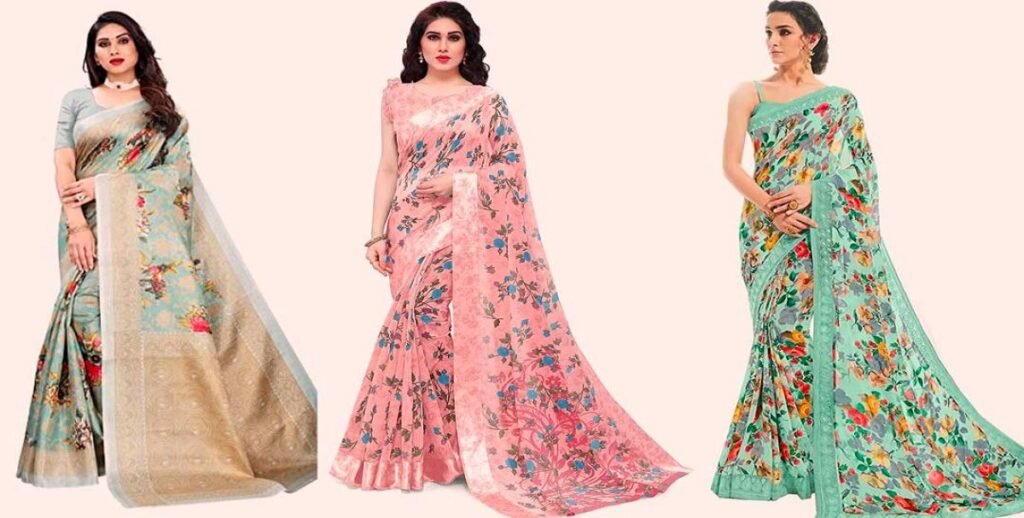Introduction
The term “sadi” often evokes various meanings and interpretations depending on cultural and historical contexts. Whether referring to a traditional attire, a form of art, or something else entirely, “sadi” holds a special place in many societies. This comprehensive guide delves into the various aspects of “sadi,” aiming to provide clarity and insight into its significance and relevance.
What is Sadi?
The word “sadi” has multiple interpretations, but it is most commonly associated with traditional attire, particularly in South Asia. In this context, a “sadi” (or “sari”) is a classic garment worn by women. It consists of a long piece of cloth, usually around six to nine yards in length, draped elegantly around the body. The sadi is often paired with a blouse (choli) and a petticoat, and is celebrated for its versatility and timeless beauty.
Historical Background of the Sadi
The sadi has a rich history that dates back thousands of years. Originating from the Indian subcontinent, it is believed to have evolved from ancient draped garments worn by both men and women. Over time, the sadi transformed into a distinctly feminine garment. Its history is deeply intertwined with cultural and religious practices, symbolizing elegance and grace.
Cultural Significance
In South Asian cultures, the sadi is more than just a piece of clothing; it represents tradition, identity, and sometimes even social status. Different regions have their own styles and ways of draping the sadi, reflecting local customs and preferences. For example:
- North India: The sadi is often worn in a more elaborate style, with intricate embroidery and heavy fabrics.
- South India: The sadi is draped in a distinctive style, sometimes with a more straightforward drape, emphasizing simplicity and elegance.
The sadi is also a popular choice for special occasions such as weddings, festivals, and ceremonial events. It is considered a symbol of respect and reverence, often chosen for its cultural and aesthetic significance.
Types of Sadi
There are various types of sadi, each with its unique characteristics and regional variations. Here are some prominent types:
- Banarasi Sadi: Known for its luxurious fabric and intricate zari work, this sadi is often worn during weddings and special ceremonies.
- Kanjivaram Sadi: Originating from Tamil Nadu, it is renowned for its vibrant colors and elaborate gold thread work.
- Chanderi Sadi: This sadi is light and airy, making it suitable for everyday wear and summer climates.
- Bandhani Sadi: A traditional tie-dye technique from Gujarat, the bandhani sadi is known for its colorful patterns and vibrant hues.
How to Wear a Sadi
Wearing a sadi can be both an art and a skill. Here’s a basic guide to draping a sadi:
- Start with Preparation: Choose a matching blouse and petticoat. Ensure that the petticoat fits well and is of the same color as the sadi.
- Tuck and Drape: Begin by tucking one end of the sadi into the petticoat at the waist. Wrap the fabric around your body, ensuring that it falls gracefully.
- Pleat and Arrange: Create pleats with the remaining fabric and secure them at the waist. Arrange the pleats neatly and ensure they fall evenly.
- Complete the Look: Drape the remaining portion of the sadi over your shoulder or head, depending on the style you prefer. Adjust the fabric to ensure a smooth and elegant look.
Caring for Your Sadi
Proper care is essential to maintain the beauty and longevity of your sadi. Follow these tips for optimal care:
- Washing: Hand wash the sadi in cold water using a mild detergent. Avoid wringing or twisting the fabric.
- Drying: Air dry the sadi by laying it flat on a clean surface. Avoid direct sunlight, as it can cause fading.
- Storage: Store your sadi in a cool, dry place, preferably wrapped in a soft cloth to protect it from dust and moisture.

FAQs About Sadi
The terms “sadi” and “sari” are often used interchangeably. However, “sadi” is a variant spelling commonly used in some regions, while “sari” is the more widely recognized term.
Traditionally, the sadi is a women’s garment. However, variations of draped clothing for men exist in different cultures, though they are not referred to as “sadi.”.
Sadis are typically worn during formal events such as weddings, religious ceremonies, and festivals. They are also suitable for cultural gatherings and special occasions.
Accessories such as jewelry, bangles, and traditional footwear can enhance the look of a sadi. Choose accessories that complement the color and style of the sadi.
Yes, contemporary designers have introduced modern variations of the sadi, including pre-draped styles, fusion wear, and experimental fabrics. These variations cater to modern tastes while retaining the essence of the traditional garment.
Conclusion
The sadi is a timeless garment that encapsulates elegance, tradition, and cultural heritage. Whether you are attending a special occasion or exploring its historical roots, understanding the significance of the sadi enriches your appreciation for this beautiful attire. By embracing its history and learning how to wear and care for it, you can fully enjoy the splendor of the sadi.
With its rich heritage and continued relevance in modern fashion, the sadi remains a cherished part of many cultures. As you explore the world of sadi, you connect with a tradition that spans generations and continues to captivate with its grace and beauty.



